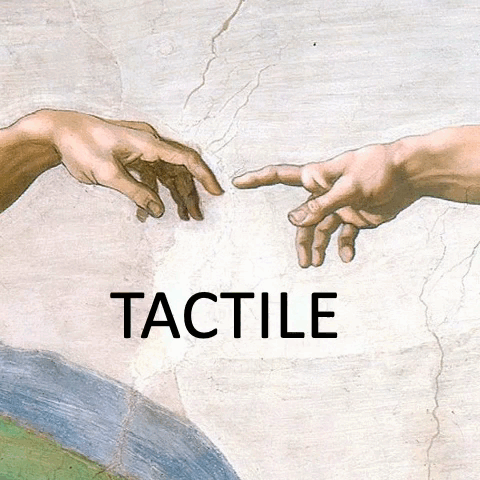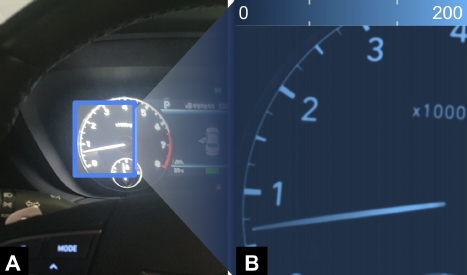
The conference on Human Vision and Electronic Imaging explores the role of human perception and cognition in the design, analysis, and use of electronic media systems. Over the years, it has brought together researchers, technologists, and artists, from all over the world, for a rich and lively exchange of ideas. We believe that understanding the human observer is fundamental to the advancement of electronic media systems, and that advances in these systems and applications drive new research into the perception and cognition of the human observer. Every year, we introduce new topics through our Special Sessions, centered on areas driving innovation at the intersection of perception and emerging media technologies.

Last year at HVEI, I presented a computational model of lightness perception inspired by data from primate neurophysiology. That model first encodes local spatially-directed local contrast in the image, then integrates the resulting local contrast signals across space to compute lightness (Rudd, J Percept Imaging, 2020; HVEI Proceedings, 2021). Here I computer simulate the lightness model and generalize it to model color perception by including in the model local color contrast detectors that have properties similar to those of cortical “double-opponent” (DO) neurons. DO neurons make local spatial comparisons between the activities of L vs M and S vs (L + M) cones and half-wave rectify these local color contrast comparisons to produce psychophysical channels that encode, roughly, amounts of ‘red,’ ‘green’, ‘blue’, and ‘yellow.”

constitutes an integral part of our perceptual reality. Within this reality, there are crossmodal interactions and sensory expectations; understanding how olfaction interacts with other sensory modalities is crucial for augmenting interactive experiences with more advanced multisensorial capabilities. This knowledge will eventually lead to better designs, more engaging experiences and enhancing the perceived quality of experience. Towards this end, we investigated a range of crossmodal correspondences between ten olfactory stimuli and different modalities (angularity of shapes, smoothness of texture, pleasantness, pitch, colors, musical genres, and emotional dimensions) using a sample of 68 observers. Consistent crossmodal correspondences were obtained in all cases, including our novel modality (the smoothness of texture). These associations are most likely mediated by both the knowledge of an odor's identity and the underlying hedonic ratings: the knowledge of an odor's identity plays a role when judging the emotional and musical dimensions but not for the angularity of shapes, smoothness of texture, perceived pleasantness, or pitch. Overall, hedonics was the most dominant mediator of crossmodal correspondences.

This exploratory study was designed to examine the effects of visual experience and specific texture parameters on both discriminative and affective aspects of tactile perception. To this end, we conducted two experiments using a novel behavioral (ranking) approach in blind and (blindfolded) sighted individuals. Groups of congenitally blind, late blind and (blindfolded) sighted participants made relative stimulus preference, aesthetic appreciation and smoothness or softness judgment of 2D or 3D tactile surfaces through active touch. In both experiments, the aesthetic judgment was assessed on three affective dimensions, Relaxation, Hedonics, and Arousal, hypothesized to underlie visual aesthetics in a prior study. Results demonstrated that none of these behavioral judgments significantly varied as a function of visual experience in either experiment. However, irrespective of visual experience, significant differences were identified in all these behavioral judgments across the physical levels of smoothness or softness. In general, 2D smoothness or 3D softness discrimination was proportional to the level of physical smoothness or softness. Secondly, the smoother or softer tactile stimuli were preferred over the rougher or harder tactile stimuli. Thirdly, the three-dimensional affective structure of visual aesthetics appeared to be amodal and applicable to tactile aesthetics. However, analysis of the aesthetic profile across the affective dimensions revealed some striking differences between the forms of appreciation of smoothness and softness, uncovering unanticipated substructures in the nascent field of tactile aesthetics. While the physically softer 3D stimuli received higher ranks on all three affective dimensions, the physically smoother 2D stimuli received higher ranks on the Relaxation and Hedonics but lower ranks on the Arousal dimension. Moreover, the Relaxation and Hedonic ranks accurately overlapped with one another across all the physical levels of softness/hardness, but not across the physical levels of smoothness/roughness. The theoretical and practical implications of these novel findings are discussed.

Subjective evaluations are necessary to learn how expected viewers perceive the quality of a system. Traditionally, non-expert subjective tests are preferred rather than expert tests. In this study, we conducted subjective evaluation experiments for non-experts and experts on compressed 8K videos using the double stimulus impairment scale (DSIS) method and analyzed the experimental results expressed in terms of the mean opinion score (MOS), which is the average of individual scores. Furthermore, we investigated the differences between non-experts and experts by considering a new method in P.913 that estimates an improved MOS and a new experimental method using experts, called expert viewing protocol (EVP). Our contribution shows advantages of conducting expert subjective tests, such as EVP: expert tests allow to perform experiments with fewer subjects, to distinguish between original and distorted images, to determine a lower threshold for the image quality, to distribute scores in an appropriate range, and to constantly gain MOS values equal to improved MOS values.

In this study, we developed a learning model to discriminate between skilled and novice users in visual inspection by visualizing their skills in the direction of gaze using an eye tracker. This model enabled us to analyze the difference in skill between skilled and novice users.

Although chromatic adaptation eases us to adopt our vision to nuanced whites, viewing more than two substantially different white balances costs perceptual workload and appeals to poor quality control. This study proposed a method for evaluating the color tolerance of light modules using a uniformity analyzer focusing on the instrument panels in passenger cars, two premium line-up vehicles from Hyundai and Mercedes Benz. Using a luminance uniformity analyzer, we captured three main lighting regions in their instrument panels: clusters, steering wheel, and center console. Based on u’ and v’ values, we identified and compared the chromaticity coordinates of the white lighting components. The measurement-based judgment supports the manufacturer in achieving the quality objectively and consistently.

Remote operation and Augmented Telepresence are fields of interest for novel industrial applications in e.g., construction and mining. In this study, we report on an ongoing investigation of the Quality of Experience aspects of an Augmented Telepresence system for remote operation. The system can achieve view augmentation with selective content removal and Novel Perspective view generation. Two formal subjective studies have been performed with test participants scoring their experience while using the system with different levels of view augmentation. The participants also gave free-form feedback on the system and their experiences. The first experiment focused on the effects of in-view augmentations and interface distributions on wall patterns perception. The second one focused on the effects of augmentations on the depth and 3D environment understanding. The participants’ feedback from experiment 1 showed that the majority of participants preferred to use the original camera views and the Disocclusion Augmentation view instead of the Novel Perspective views. Moreover, the Disocclusion Augmentation, that was shown in combination with other views seemed beneficial. When the views were isolated in experiment 2, the impact of the Disocclusion Augmentation view was found to be lower than the Novel Perspective views.

This paper introduces a new framework to predict visual attention of omnidirectional images. The key setup of our architecture is the simultaneous prediction of the saliency map and a corresponding scanpath for a given stimulus. The framework implements a fully encoder-decoder convolutional neural network augmented by an attention module to generate representative saliency maps. In addition, an auxiliary network is employed to generate probable viewport center fixation points through the $SoftArgMax$ function. The latter allows to derive fixation points from feature maps. To take advantage of the scanpath prediction, an adaptive joint probability distribution model is then applied to construct the final unbiased saliency map by leveraging the encoder decoder-based saliency map and the scanpath-based saliency heatmap. The proposed framework was evaluated in terms of saliency and scanpath prediction, and the results were compared to state-of-the-art methods on Salient360! dataset. The results showed the relevance of our framework and the benefits of such architecture for further omnidirectional visual attention prediction tasks.

Visual scanpath is the sequence of fixation points that the human gaze travels while observing an image, and its prediction helps in modeling the visual attention of an image. To this end several models were proposed in the literature using complex deep learning architectures and frameworks. Here, we explore the efficiency of using common deep learning architectures, in a simple fully convolutional regressive manner. We experiment how well these models can predict the scanpaths on 2 datasets. We compare with other models using different metrics and show competitive results that sometimes surpass previous complex architectures. We also compare the different leveraged backbone architectures based on their performances on the experiment to deduce which ones are the most suitable for the task.